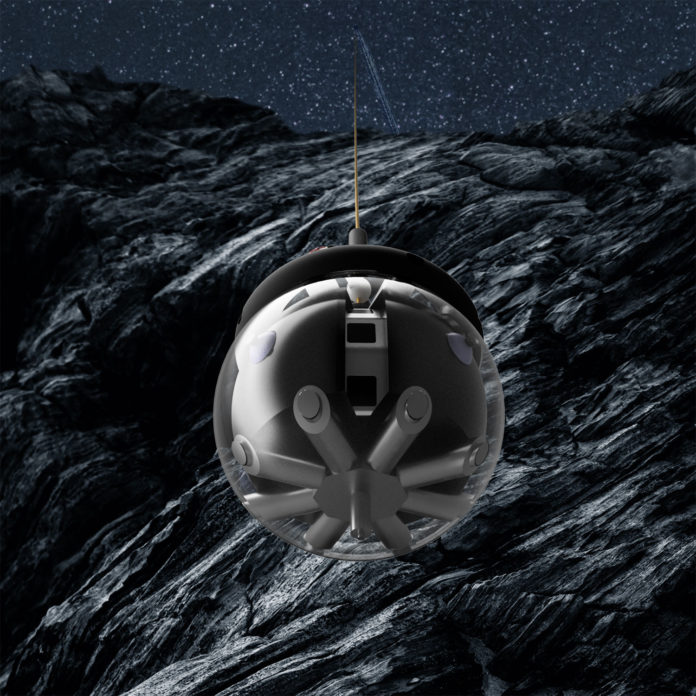While the different public and private space agencies have the focus above all on Mars and how to get there as soon as possible in the current space race, the European Space Agency (ESA) is also working on a closer objective: exploring the caves of the Moon.
ESA has begun testing autonomous robot the DAEDALUS (Descent And Exploration in Deep Autonomy of Lunar Underground Structures), designed to explore the depths of lunar caves and underground lava tubes on the Moon or on other extraterrestrial domains, i.e., asteroids or planets, where high autonomy is necessary.
The sphere-shaped probe was designed by a team coordinated by Germany’s Julius-Maximilians-Universität of Würzburg (JMU) and is being evaluated by ESA’s Concurrent Design Facility as part of a larger study of lunar cave mission concepts.
According to the agency, lunar orbiters have already mapped multiple deep pits on the surface of the Moon that is interesting for the scientific community. The sites have not been explored yet, and it is hypothesized that they offer access to pristine lunar material – perhaps even water ice deposits.
In addition, the organization points out that the caves might also become habitats for lunar settlers, offering natural shielding against radiation, micrometeorites, and surface temperature extremes.
DAEDALUS is a spherical robot with a diameter of 46 cm that would carry an immersive stereoscopic camera, a ‘laser radar’ lidar system for 3D mapping of cave interiors, temperature sensors, and a radiation dosimeter. The robotic sphere also has extendible arms to help clear obstacles and test rock properties.
It will be lowered into the cave mouth on a long tether, then disconnect to roll away autonomously under its own power. The hanging tether would then double as a Wi-Fi receiver, allowing DAEDALUS to relay its findings out of the pit.
“The design is driven by the requirement to observe the surroundings in full 360 degrees and the necessity to protect the interior from the harsh lunar environment,” explains Dorit Borrmann of the DAEDALUS team. “With the cameras acting as a stereo vision system and the laser distance measurements, the sphere detects obstacles during descent and navigates autonomously upon reaching the pit floor.“
There is so far no information on when we could possibly see robots like DAEDALUS rolling around the Moon. If it does, it will probably take several years before the robots are ready to be used there.
